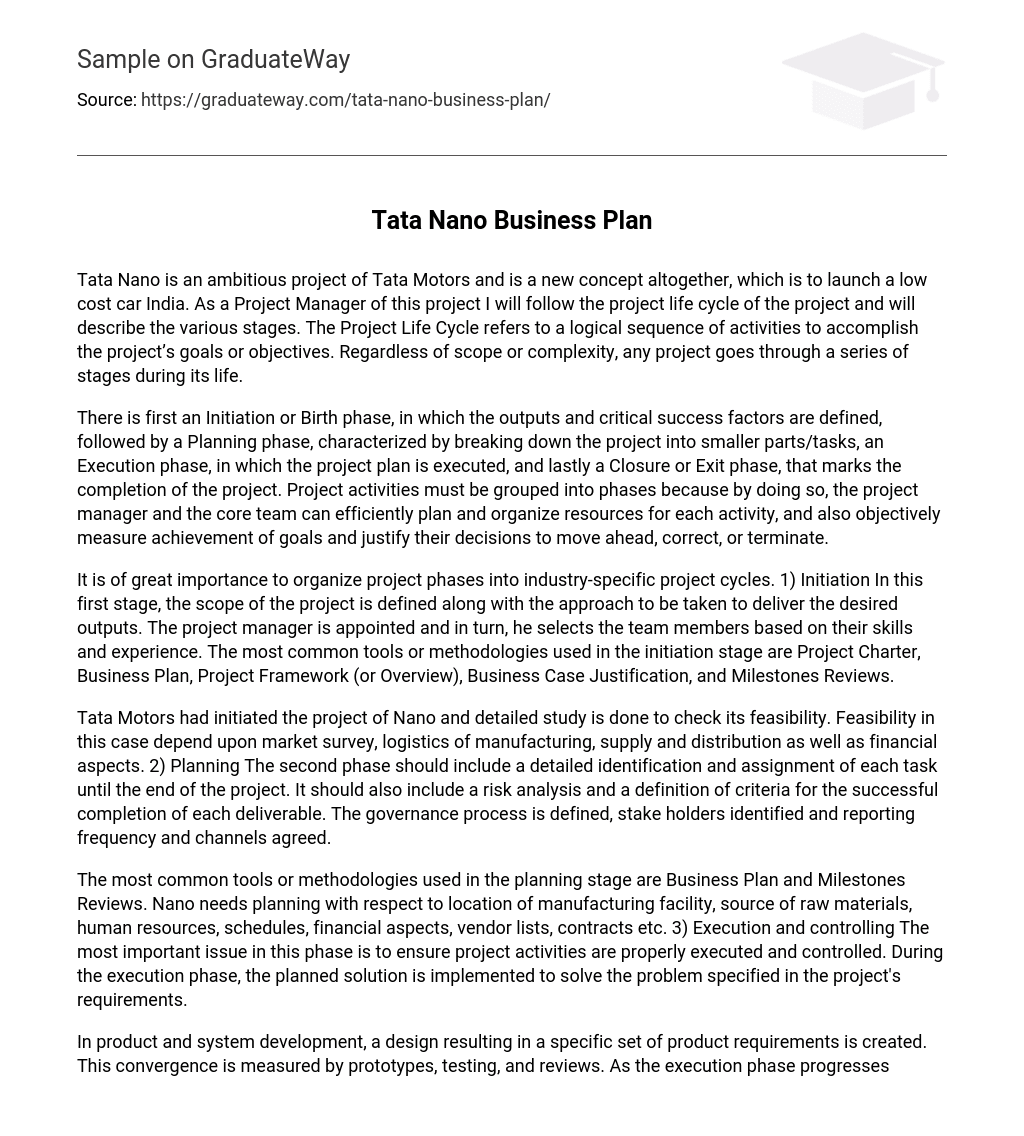Tata Nano is an ambitious project by Tata Motors aimed at launching a low-cost car in India. As the Project Manager, I will adhere to the project life cycle and outline its different stages. The Project Life Cycle entails a logical progression of activities to achieve the project’s objectives. Irrespective of its scope or complexity, every project undergoes a series of stages throughout its lifespan.
The project consists of four phases: Initiation or Birth, Planning, Execution, and Closure or Exit. The first phase involves defining the outputs and critical success factors. In the Planning phase, the project is broken down into smaller parts or tasks. The Execution phase is when the project plan is carried out. Lastly, the Closure or Exit phase marks the completion of the project. Grouping project activities into phases allows for efficient resource planning and organization, as well as objective measurement of goal achievement. It also enables the project manager and core team to justify their decisions to move ahead, correct any issues, or terminate the project.
Organizing project phases into industry-specific project cycles is highly important. 1) Initiation: This initial stage involves defining the project’s scope and determining the approach for delivering the desired outputs. The project manager is appointed and selects team members based on their skills and experience. Some commonly used tools or methodologies during this stage include Project Charter, Business Plan, Project Framework (or Overview), Business Case Justification, and Milestones Reviews.
Tata Motors began the Nano project, conducting a comprehensive study to assess its feasibility. Feasibility is determined by factors such as market survey, manufacturing logistics, supply and distribution, and financial considerations.
Additionally, the second phase of the project involves detailed task identification and assignment until completion. This phase also includes risk analysis, criteria for successful completion of each deliverable, defining the governance process, identifying stakeholders, and agreeing on reporting frequency and channels.
The most common tools or methodologies used in the planning stage are Business Plan and Milestones Reviews. Nano needs planning with respect to location of manufacturing facility, source of raw materials, human resources, schedules, financial aspects, vendor lists, contracts etc. The most important issue in this phase is to ensure project activities are properly executed and controlled. During the execution phase, the planned solution is implemented to solve the problem specified in the project’s requirements.
During product and system development, a design is created that meets certain product requirements. This design’s effectiveness is determined through the use of prototypes, testing, and reviews. As the execution phase continues, various groups within the organization become more involved in planning for final testing, production, and support. The most commonly used tools or methodologies during this phase include an updated Risk Analysis and Score Cards, as well as Business Plan and Milestones Reviews.
4) Project Closure involves the following activities: releasing the final deliverables to the customer, handing over project documentation to the business, terminating supplier contracts, releasing project resources, and communicating project closure to all stakeholders. Additionally, a Post Implementation Review is conducted to assess project success and identify lessons learned for future projects. The activities in different stages of the Tata Nano Project life cycle can be summarized in the following chart:





